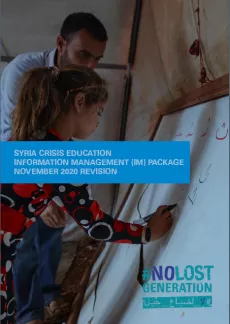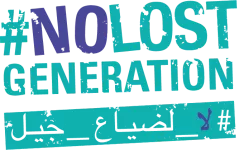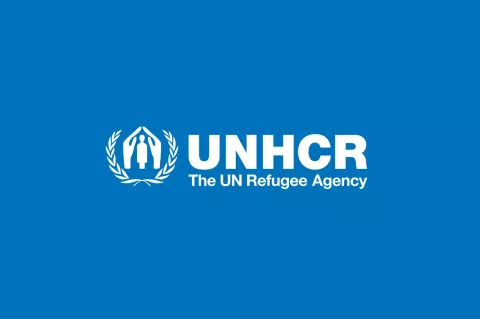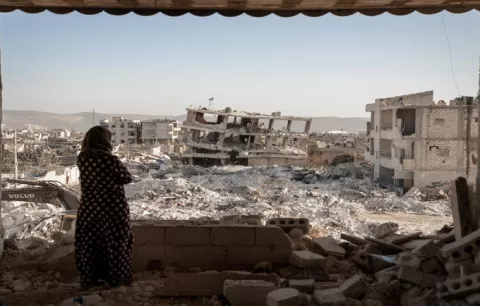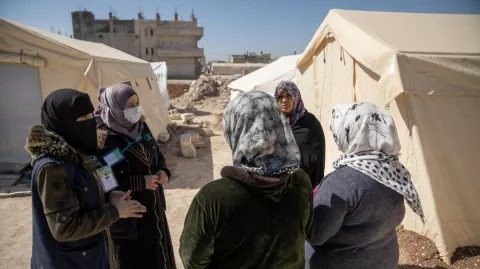Syria crisis education information management (IM) package review
No Lost Generation
Highlights
“SYRIA CRISIS EDUCATION INFORMATION MANAGEMENT (IM) PACKAGE REVIEW FOR ENHANCING 3RP/HRP/SDG4 MONITORING AND REPORTING FRAMEWORK”
NLG education pillar partners held a series of online technical meetings in June and August with active participation of both IM and Education specialists in the Syria crisis response countries, and jointly revised the IM Package indicators to be rolled out through education sectors/clusters with expanded definitions and clarifications adapting to the current contexts.
Since the start of the Syria Crisis response and the multi-country coordination, there have been progressive developments around indicators, IM and reporting. However, continuous capacity building initiatives in providing timely quality data are needed to strengthen analyses and deepen collective knowledge, including tackling some inconsistencies when aggregating at regional level.
As a preparatory thought process toward actual revision, UNICEF, UNHCR, UNESCO, WFP and UNRWA each gave a presentation on below themes and facilitated breakout group discussions:
- Programmatic implications of Covid-19
- 3RP/HRP monitoring and reporting challenges
- Critical reflection on usefulness of the IM Package; SDG4 monitoring and alignment
- Data literacy, visualization, Interpretation and limitation
- Emerging data needs in health emergencies
The participants engaged in these group and plenary discussion topics, sharing their recent experiences: Data demands and field realities; NFE data integration into National Education Statistical Information System (EMIS); Indicator definitions; Data disaggregation (CwD, age group, NFE/IFE); Potential data sources for the new indicator; Data sources, reporting and verification challenges; and To what extent the IM Package indicators can monitor new programmatic considerations and responses.
The August hands-on sessions reviewed the document word by word focusing on the themes that emerged from the June meetings: Safe school operation, MHPSS, connectivity, learning assessment, parental engagement, age group, clarifying definitions (training, incentive, FE/NFE/IFE, school feeding programmes) and re-definitions after Covid-19 (back-to-learning, school supplies, learning materials).
Previously, the IM Package consisted of 19 access indicators, 10 quality indicators and 4 system indicators. With the intensive discussions and reviews, 3 new indicators were added:
- 1.7b # of (5-17 year, girls/boys) children receiving support (including case-based support) for enrolment to all forms of education
- 1.8a # of schools implementing safe school protocols
- 3.3c # of parental engagement activities supported or established
The entire process, enforcing the foundation for the post-3RP/HRP reporting mechanism, served to strengthen the capacity of participants through a shared understanding of the existing indicators and reporting framework, which will contribute to greater harmonization and comparability. The process was also a forum to discuss and agree on the scope of new indicators for enhancing planning process, resource mobilization and more targeted impactful response with cross-sectoral lens — child protection, WASH, etc. Furthermore, the process contributed to widen the discussion beyond the 3RP/HRP framework to promote the use of common indicators and comparative/comparable data that bridge the humanitarian-development nexus towards non-emergency reporting and monitoring then transparent integration into EMIS. Some IM Package indicators may gradually be able to fill the data gap in NFE reporting and monitoring as proxy indicators. Those indicators currently reported in 3RP/HRP may eventually influence policies and practices leading to the adoption of conflict-sensitive monitoring system and cross-border sensitive data collection.
Background
In 2015, in order to align the broad HRP/3RP objectives with the NLG framework, UNICEF MENARO developed a guidance for suggested outcome and output indicators for Education in Emergencies (EiE) linked to specific activities categorized and ordered along three goals: (i) Access to education, (ii) Quality of the education services and (iii) Education System Strengthening. The Guidance was shared with and endorsed by the education sector coordinators during the 2015 3RP midyear review. It was then implemented at country level to different degrees and countries experienced a few challenges on the way. Furthermore, the London Pledging Conference in February 2016 engaged countries around strategic shifts to the education policy environment, access and quality of education that need to be taken into consideration in the education response planning, programming and reporting. During the Syria Crisis Information Management workshop held in Amman in July 2016, country delegations from Syria and the 5 refugee hosting countries developed the Syria crisis education IM package, a consistent and coherent list of EiE indicators that is accompanied with clear guidance on activities and methods of calculation. The IM Package has been used by the education sectors in each country within their respective education response plans (3RP and HRP) to ensure greater harmonization and comparability.
From 2017-2019 HRP/3RP Information Manager specialists and Education specialist met on annual basis to review the common Information Management Indicator framework based on field experiences and challenges faced in reporting the progress made in the education response to the Syria crisis both in the host countries and Syria. The three (3) review workshops were an opportunity to strengthen and endorse the Syria crisis IM package and to discuss its application beyond the Syria crisis response, by mainstreaming it in other MENA crisis context. In addition, the workshops discussed the alignment of IM tools and systems used in the crises response to national data collection and management systems, in line with the recommendation of the London strategic shifts to enhance national systems to support an evidence-base response accounting for monitoring of equity, quality and inclusiveness.
In 2020, from June 2nd-30th, NLG education pillar partners undertook similar exercise to review and update the existing IM Package indicator framework in line with emerging data needs such as further disaggregation of education type, population and age groups, as well as to reiterate and/or adjust the definitions of some misinterpreted terms in indicators affecting quality of collected data within pandemic and health emergencies contexts. The process which took place through online consultation gave an opportunity to 3RP countries to strategically align the scope of indicators in relation to quality and to explore how monitoring of learning achievements or needs of children with special needs may be incorporated and look at alignment with SDG4 reporting requirements both national and regional levels.
You can access the previous version of the IM Package (published in 2019), by following this LINK.
